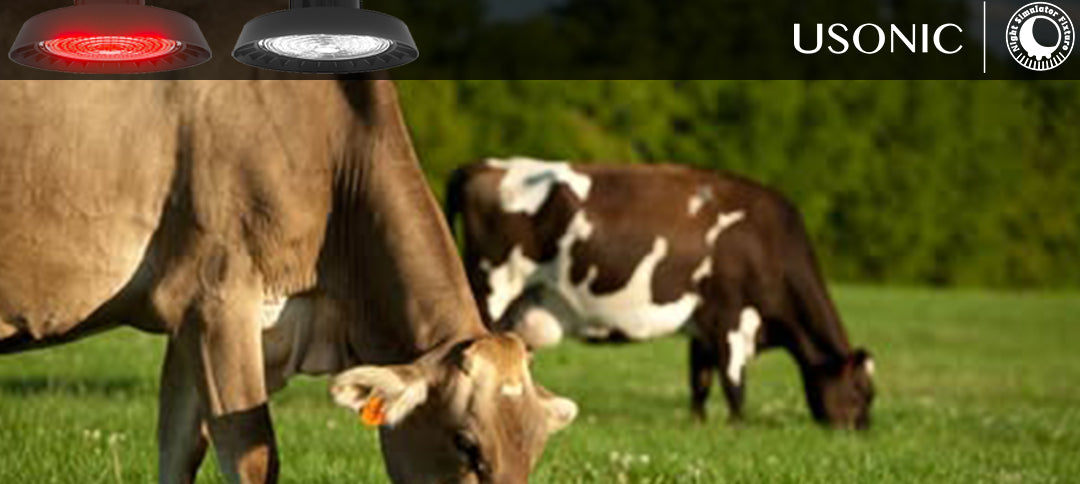Boosting Milk Yield and Herd Health
The global dairy industry is constantly seeking innovative ways to improve milk production and animal welfare. Among the latest advancements, red and white light therapy has emerged as a promising non-invasive solution
Having tested multiple lighting systems across different farms, I’ll break down how red and white light therapy works, which products deliver real results, and how farmers can implement this technology effectively
The Science Behind Red & White Light for Cows
Red Light – The Recovery Booster
Red and near-infrared (NIR) light penetrates deep into tissues, stimulating cellular energy (ATP) production. In dairy cows, studies confirm:
✅ 33% increase in milk production (due to improved metabolic efficiency)
✅ Faster wound healing (reduces mastitis recovery time by ~30%)
✅ Reduced inflammation (beneficial for joint health in older cows)
White Light – The Circadian Regulator
Full-spectrum white light mimics natural sunlight, crucial for:
✅ Optimizing melatonin & cortisol rhythms (reduces stress and improves sleep cycles)
✅ Enhancing fertility (consistent light exposure improves estrus detection)
✅ Boosting overall activity & feed intake (leading to better milk yields)
The Science Behind Lighting and Milk Yield
Research has long established that light exposure significantly impacts dairy cows' productivity. Cows require a balanced light-dark cycle to maintain optimal health and milk output
16-18 hours of light per day, followed by 6-8 hours of darkness, can increase milk production by 33%.
Proper lighting regulates melatonin and prolactin levels, hormones essential for lactation.
LED-based lighting systems provide consistent illumination, reducing stress and improving cow behavior
Key Features of Advanced Cow Farm Lighting Systems
Leading USONIC manufacturers are integrating smart technology into dairy farm lighting, offering features such as:
Programmable lighting schedule – more low-carbon, adjusts brightness and duration according to the cow's biological clock and group needs.
Energy-Efficient LEDs – Reducing electricity costs by up to 60% compared to traditional lighting.
Durability & Weather Resistance – Designed to withstand harsh farm environments, including dust and moisture.
Reduce eye fatigue - balanced spectrum can reduce fatigue when working for a long time, and also greatly improve the safety of workers
Customized spectrum – Intelligent regulation of light time can reduce stress in cows, enhancing their alertness and activity.

Market Growth and Industry Trends
The global agricultural lighting market is projected to grow at a CAGR of 15-20% from 2023 to 2030, driven by the increasing adoption of precision livestock farming (PLF) technologies. Key trends include:
Government Incentives – Many countries are promoting energy-efficient farming solutions through subsidies and grants.
Integration with IoT – Lighting systems are being linked with sensors and data analytics to monitor cow health and productivity in real time.
Sustainability Focus – Dairy farms are under pressure to reduce carbon footprints, making LED lighting a preferred choice.

